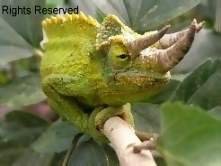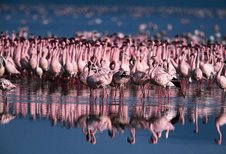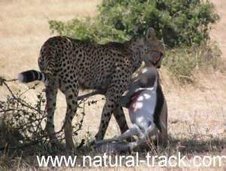Maasai are one of the best known African tribes.
Perhaps they are so well known because of their tall elegant muscular
features or their fierce and brave reputation or maybe because of their
simple yet distinctive appearance with ochre covered warriors proudly
holding their spear and wearing their bright blood-red shoulder cloak
(shuka/kanga) and the women wearing bangles and strings of colored
beads around their neck (both sexes wear earrings, taking pride in
stretching large holes in their ear lobes).
The Maasai becomes clearer during the nineteenth century which saw
increasing western encroachment into Kenya. This took the form of
missionaries and explorers. The missionaries were keen to convert tribes
to Christianity , halt slave trading and stop some of the Maasai
practices which they perceived as barbaric ( such as dressing almost
naked and leaving their dead for wild animals rather than having a
burial ceremony). Under the great pressure from foreign influence and
more inter tribe warfare; the Maasai were deeply affected when
rinderpests (a cattle disease) struck their herds around 1880-1890. The
reduced grazing led to more woodland which encouraged breeding of the
harmful Tse Tse fly. The Maasai were also hit with drought, famine,
smallpox and cholera. Later they were forced out of even more of their
land which had already been bisected by the Kenya- Uganda railway and in
the early 1960 they also lost more of their territory during the
government land redistribution program which included the creation of
the Maasai Mara game reserve. The Maasai still remain one of the great nomadic tribe of the modern world.
THE IMPORTANCE OF CATTLE.
The Maasai are semi nomadic pastoralists who rear cattle and as a
result sometimes have to travel searching for new grazing pastures. The
cattle are fundamental to the tribe’s survival and this has led to an
almost mystical relationship. The Maasai believe that their God granted
all cattle to them for safe keeping when the earth and sky split (they
feel this justifies them raiding cattle from other tribes). The cattle
serve many purposes, their milk and blood is used for food. The hide is
used for mattresses, shoes and other accessories; their dang is used for
plastering hut walls, their urine for medicinal purposes, and their
meet for food. Blood is obtained by shooting an arrow at close range
through the cattle vein, then capturing he spilled blood into a gourd
were it can be mixed with milk. Cattle are a major sign of wealth and
exchanged during marriage to pay for the bride.
THE MAASAI HOME.
Maasai families live in an Enkang a form of enclosure formed by a
thick acacia fence. This protects Maasai and their cattle especially at
night from predators. The enkang may contain 10-20 small huts
(manyattas). Maasai huts (manyatta) are very small with perhaps two
rooms and not enough height for tall people to stand upright. They are
also very dark with small halls at the wall which are used as vent to
let the light in.
The Maasai are a proud and independent people who have survived
despite incredible pressure; however their greatest challenges remain
over. They are losing their grazing land and ability to roam freely
throughout the country because most of the land has been taken for
conservancy or large scale farming. The young generation is being
influenced by modern school and town’s development. Some Maasai may seek
comfort and income from tourism and neglect their ways of survival.
Maasai are beautiful people.
PKP. Kenya safari desk
Subscribe to:
Post Comments (Atom)









No comments:
Post a Comment